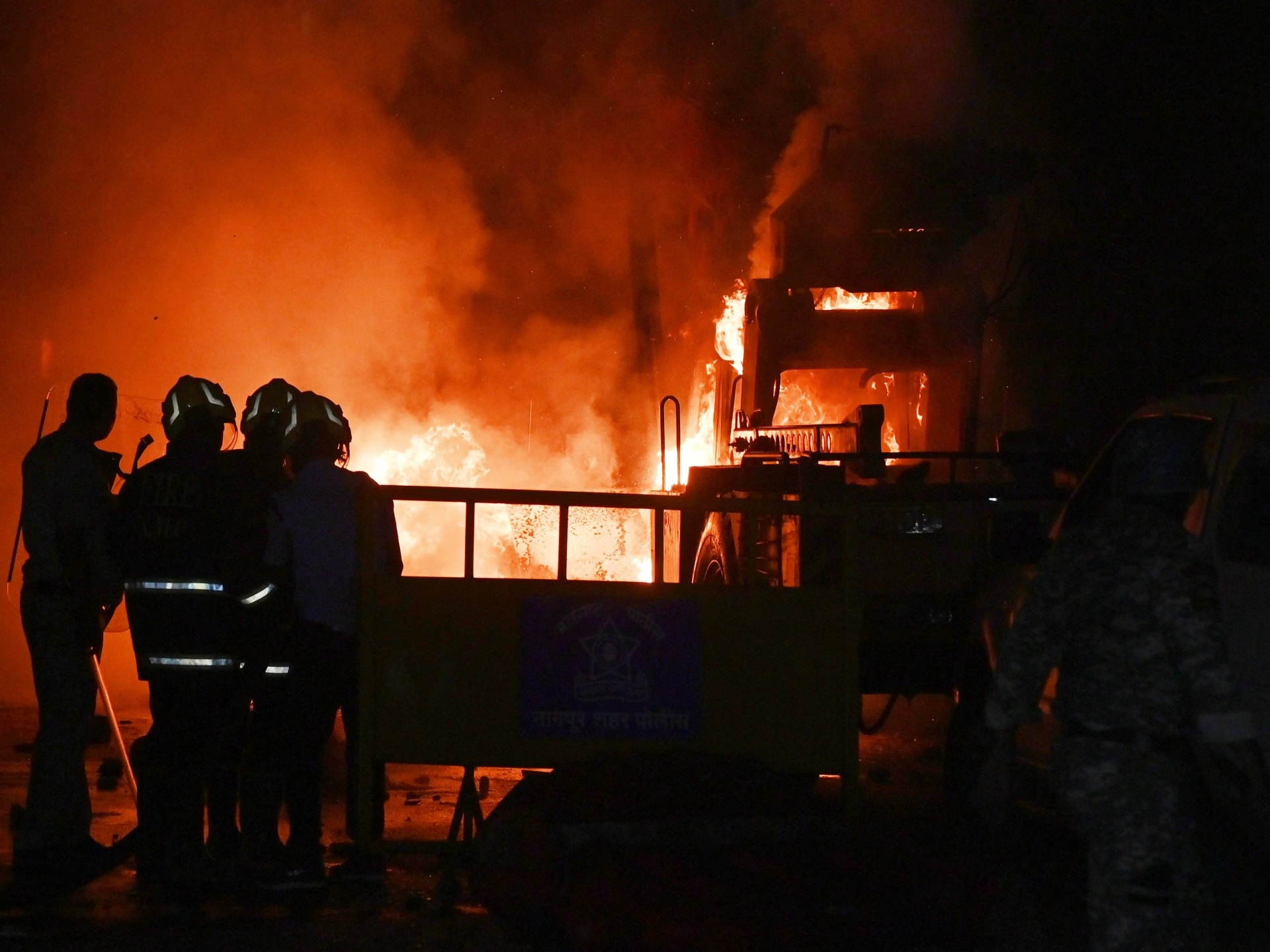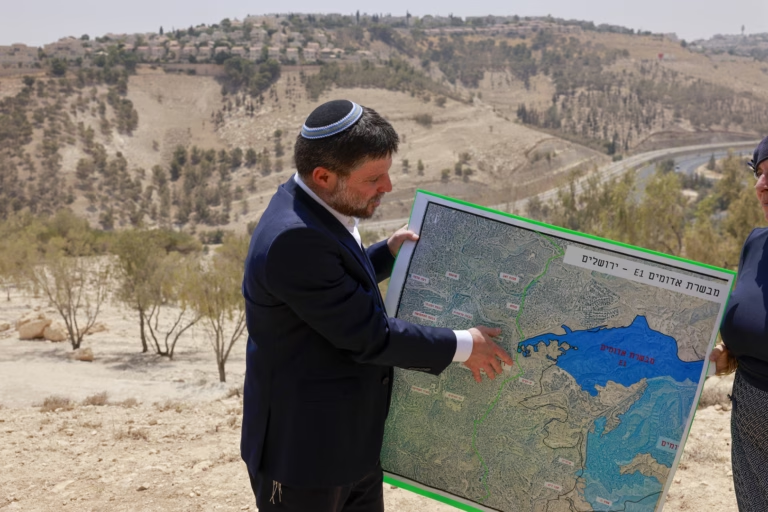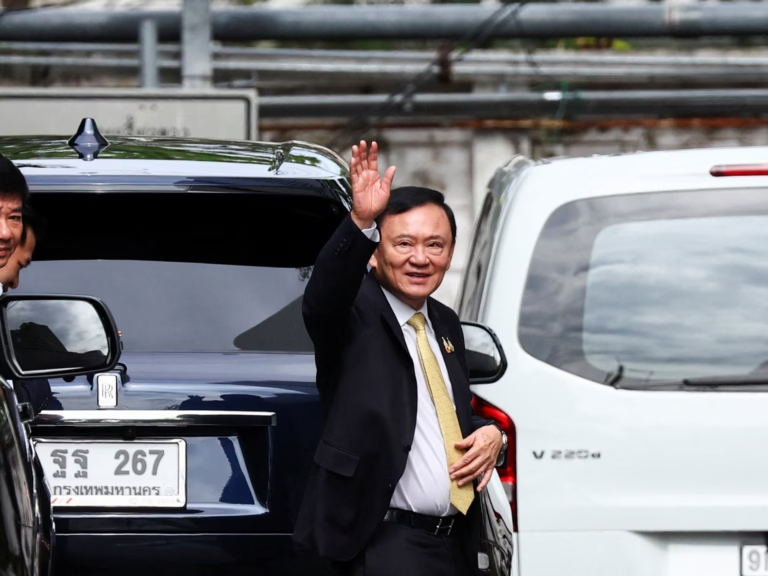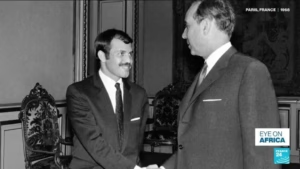About a mile (1.5km) away, a man named Aslam remains frightened and is avoiding returning home due to his fear of being arrested by the police, who he says are wrongly detaining innocent Muslims. “I’ve done nothing wrong, but when police come, they seem intent on causing us harm,” he stated.
Both are residents of Nagpur, a city of three million people in Maharashtra, India, where violence erupted on Monday over the status of the tomb of Aurangzeb, the Mughal emperor from the 17th century.
To maintain order, the police have enforced a curfew and over 50 people, mostly Muslims, have been arrested in anticipation of Prime Minister Narendra Modi’s planned visit on March 30. Nagpur is also the base for the Rashtriya Swayamsevak Sangh (RSS), the organization ideologically linked to PM Modi’s Bharatiya Janata Party (BJP).
So, how did Nagpur, known for its oranges, become the site of inter-religious violence? Who is Aurangzeb, and why does his legacy still divide India?
Why Did Nagpur Erupt in Violence?
Last week, a BJP member of parliament in Maharashtra called for the excavation of Aurangzeb’s grave.
Nearly a hundred volunteers tied to the far-right group Vishwa Hindu Parishad (VHP) demonstrated in Nagpur on Monday, demanding the destruction of Aurangzeb’s grave, which they claim he used to oppress Hindus and attack their religious sites during his reign from 1658 to 1707.
“That grave is a stain on our land,” stated Amit Bajpai, a VHP spokesperson and protest organizer. “We gathered in a square and burned an effigy of Aurangzeb covered in a green cloth in the presence of the police.”
“It is our democratic right to demand what we believe is right,” Bajpai added.
However, other onlookers, including Muslim vendors, urged the police to stop the protest, particularly during Ramadan, asserted Asif Qureshi, a lawyer and former chairman of the Maharashtra Bar Council, who resides in the area.
Rumors that the green cloth around the effigy had Quranic inscriptions on it spread anger among Muslims. After breaking their fast and praying, Muslim groups organized a counterprotest demanding that the police take action against the VHP members.
“Unfortunately, things soon spiraled out of control, and people began clashing,” Qureshi shared with Al Jazeera.
A curfew was then put in place, with police checkpoints set up in the conflict-hit areas of the city. A police crackdown followed. Qureshi stated that the police should arrest Muslims involved in the violence but instead “are detaining innocent individuals who were merely out to pray.”
Following the clashes, Bajpai from the VHP expressed fury. “We will now resist even harder. Why do they think they can scare us with riots? We want Aurangzeb removed from here.”
Meanwhile, Maharashtra’s Chief Minister Devendra Fadnavis hinted that a recent Bollywood film depicting Aurangzeb as a villain might have incited Hindu sentiments. The film Chhaava fictionalizes Aurangzeb’s conflicts with the Marathas and, according to Fadnavis, brought “public anger against Aurangzeb” to the forefront. Fadnavis also belongs to PM Modi’s BJP.
Who Was Aurangzeb?
Aurangzeb’s grave is not in Nagpur but 450 km away in what was Aurangabad (now Chhatrapati Sambhajinagar), renamed by Hindu nationalist groups. Historians argue Aurangzeb’s legacy is more complex than current portrayals.
Aurangzeb inherited a strong empire and was a powerful ruler who was skilled at building alliances. He was influenced by another Mughal emperor, his great-grandfather Akbar.
Aurangzeb imposed strict Islamic laws and a tax on Hindus, but also ruled with a complex character, often prioritizing power over faith, according to Audrey Truschke, a historian and author of the book Aurangzeb: The Man and the Myth.
Why Is Aurangzeb So Divisive in India?
Historians point out that pre-modern Indian kings were not democratic figures. The vilification of Aurangzeb by British colonialists has been perpetuated by Hindu nationalists today.
Recent instances show a rise in aggressive actions over Aurangzeb, from arrests for posting images of Aurangzeb to changes in school textbooks. For many supporters of Modi, Aurangzeb is viewed as one who demolished temples and persecuted Hindus.
Hindu nationalists are claiming that the Gyanvapi mosque in Varanasi stands on the ruins of a destroyed temple ordered by Aurangzeb. PM Modi has referred to Aurangzeb’s “atrocities” multiple times.
Tensions in Nagpur linger, with residents and activists worrying about further violence and calling for the state to handle the situation without prejudice.
Audrey Truschke believes the obsession with history by Hindu nationalists is rooted in a disdain for Muslims, past and present. “It’s insane to pursue what could have happened in the 17th century,” she stated.







